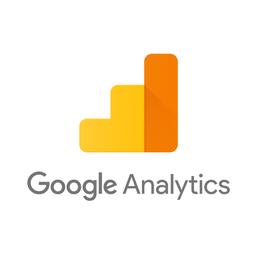Connect WooCommerce and Google Analytics 4
Why do WooCommerce and Google Analytics Need to Be Connected?
WooCommerce is a popular e-commerce plugin for WordPress. Google Analytics is one of the most widely used web analytics services. Both offer a rich set of marketing data, but connecting WooCommerce to Google Analytics in a way that provides precise attributed data on e-commerce conversions can be tricky.
WooCommerce plugins' built-in connectivity often doesn't solve all needs related to attributing WooCommerce sales conversions to visitor sources in Google Analytics 4. Common challenges include:
- Missing e-commerce conversions or lack of attribution. When a plugin-based solution is used, it relies on displaying Google Analytics tracking code to the website visitor after the purchase. It doesn't always happen and Google Analytics might be missing WooCommerce conversions or displaying them as coming from an unknown "direct/none" source. These issues are caused by privacy features of browsers that remove tracking cookies and can be exacerbated by the payments provider integration implementation, as well as the checkout process configuration.
- Unreliable tracking of conversions in long funnels in lack of full LTV visibility. For example, when a customer enters a funnel with a lead capture form, or simply makes a repeated purchase a few months after the first purchase, initial tracking cookies would usually not be available, resulting in lack of data where this customer came from.
Many marketers see WooCommerce conversion sources missing from Google Analytics 4 reports to be a natural technology limitation. It doesn't have to be this way.
E-commerce sales can be tracked throughout the entire funnel: from the first interaction to the revenue. Attributing sales to leads and leads to marketing sources allows for accurate tracking of end-to-end marketing campaigns and understanding of ROI. The server-side WooCommerce and Google Analytics integration in combination with first-party attribution makes it possible to get a complete overview of the customer journey.
A Complete Solution for Integrating WooCommerce and Google Analytics
Able Customer Data Platform is the ultimate WooCommerce and Google Analytics 4 integration.
It combines browser tracking with WooCommerce and Google Analytics API integrations, linking website activity with purchases on the back-end to build a complete journey of each customer across WooCommerce and Google Analytics.
This allows you to attribute 99% of sales to the correct marketing source, ad click and landing page and obtain data to inform strategy.
All of this without coding and complex manual set-up of the connection between WooCommerce and Google Analytics. Able already knows how to connect marketing data between WooCommerce and Google Analytics.
Able supports both Google Analytics Universal Analytics (UA) and Google Analytics 4 (GA4). Able works with both regular and headless WooCommerce stores.
How Able CDP Integrates WooCommerce and Google Analytics
Able tracks WooCommerce order forms as well as purchases by receiving web hooks from WooCommerce and attributing purchases to the original visitor tracked by Able, allowing to send purchase conversions to Google Analytics and ad platforms such as Google Ads.
Able Customer Data Platform combines browser and back-end tracking to:
- store Google Analytics Client Id for each started order;
- add UTM parameters, referrer URL and landing page details to new leads;
- attribute successful WooCommerce order after to the Google Analytics user id after a payment is completed and send e-commerce transaction to Google Analytics.
6 Steps to Connect WooCommerce with Google Analytics by Using Able
Step 1. Sign up for a free Able trial account
Complete the sign up form to create a trial account.
Step 2. Install Able tracking code on the website
After signing up for a free account, Able CDP will prompt you to add code to your website.
This tracking code will record ad click ids and details of the original landing page visit, as well as started checkouts and lead form submissions, allowing to attribute customers to website visitors. Able CDP uses its tracking to capture UTM parameters, referrer URL and landing page URL, store them in its own attribution database together with the personal identifiers such as email or phone, entered by customer in lead and order forms, allowing it to associate all future customer activity with the original website visitor source.

Add lead form URLs to the HTML Forms Tracking section to let Able automatically recognize the checkout and lead forms you're using. Any standard lead form widgets that we could detect during the account setup will appear in the Dynamic Lead Forms Tracking section.
Press "Generate" in the Get Code section to generate a unique tracking code to add to your site.
Able CDP page view tracking doesn't install its own cookies and relies on third-party identifiers such as Google Analytics Client Id to connect customer activity between website pages. Please enable cross-domain measurement in Google Analytics if your landing and lead/order pages are hosted on different domains.
Step 3. In the Funnel tab, click add service integration to select which platforms you want to integrate with

Step 4. Connect Able to WooCommerce

Configure WooCommerce to Notify Able of New Purchases
- Open Advanced - Webhooks in WooCommerce settings. Add a new webhook with following parameters:
- Status: Active
- Topic: Order Updated
- Delivery URL: https://pfsh9epbe1.execute-api.eu-west-2.amazonaws.com/Prod/woocommerce-webhook/%%FUNNEL_MARK%%, where %%FUNNEL_MARK%% - unique identifier of your funnel.
Able CDP will now receive webhooks from WooCommerce and retrieve purchase details from its API, automatically attributing Purchases to Visitors by customer emails and phones and sending Purchase conversions with detailed Invoice Lines where supported.
WooCommerce purchases are attributed by matching purchase to the web lead by billing email or phone. Transition of order status into ‘processing’ is treated as a successful order event.
Step 5. Add Google Analytics Property Id to Able to send leads as Google Analytics e-commerce conversions
1. The first step is to locate the Google Analytics tracking id for the property you’d like to use for reporting.
Open Google Analytics, Admin – Data Streams page. Measurement Id should be the first item on the list. Record it.
2. Second, press Add Service Integration in Able Dashboard and insert Google Analytics Measurement ID there

3. Enable Outbound Integration
Select the Google Analytics Credential you’ve just saved and ‘Purchase’ event type. Press ‘Save’.

At this point required integration setup is complete and Able will start sending all Purchases that it attributed to Google Analytics visitors to Google Analytics Measurement API. Conversions will appear in all standard reports.

Universal Analytics will shut down in July 2023, so we recommend beginning the process of sending data to GA4 now so you have time to familiarize yourself with the platform and begin accumulating data there.
Learn More
E-Commerce Conversion Funnel Tracking
Able CDP helps to track modern multiple step e-commerce funnels where customers interact with multiple services prior to eventually making a purchase, resolving issues with incorrect Google Analytics attribution and conversions missing from Google Ads and Facebook Ads reports.
Sending conversions to Google Ads is an extremely common integration scenario. Its used to add conversion value to Google Ads’ reports, allowing to report on ROI, as well as to use performance-based targeting and optimization capabilities.
Send Purchases to Facebook Conversions API
Attributing conversions to Facebook Ads is a common task, however doing it with sufficient precision is hard. Sales might happen in CRM, or, when they happen online, customer might not come back to the website, so tracking with Facebook Pixel JS produces substandard results. Able solves this problem with its Facebook Conversions API integration.








